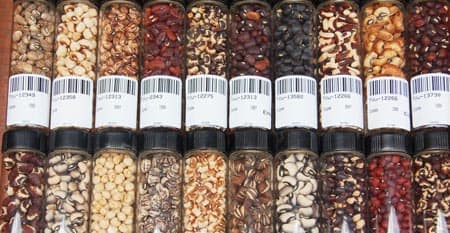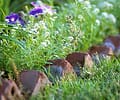Collecting and sowing your own seeds can be a fun and gratifying experience for the home gardener.
At first, the details may seem overwhelming, but as you gain experience and are rewarded with new seedlings, seed saving will become second nature to you.
If you are a home gardener, you can collect your own seeds from your own plants. Commercial seed packets routinely provide seed information on the back of the packets. However, if you are interested in collecting your own seeds, you can find this same information in books and online.
Although your choices are limited by the number of plants that you can grow in a particular garden area, you can join a seed exchange group, which will increase the availability of saved seed for your future planting. The joy of watching seeds magically sprout and the great disappointment in seeing them fail to grow gives us the incentive to identify the best practices for collecting and storing plant seeds.
How to Collect Seed
The first step in seed collecting is to choose healthy plants with high quality seedpods and fruits for seed collection. Healthy plants show vigorous growth, exhibit resistance to pests and disease, produce good quality fruit and high yields.
As your chosen plants finish flowering, look for swelling seedpods or ripening fruit. Collect only fully mature or ripened seed. Sometimes, nearly mature seeds may ripen off the plant, if they remain in their seedpods. If picked too early, the embryo will not survive the drying out process, but if picked too late, the wind may blow away the seed.
Use fine, nylon-mesh bags to collect seeds and seed structures, paper bags for seeds, cloth bags for panicles or dry fruit and open baskets for fleshy fruit. Be sure not to squash the fruit, and don’t let the seeds become hot or moldy.
Seed propagation preserves and promotes genetic diversity. As a result of the sexual union of flower parts (male and female), each seed contains an embryo, a packet of energy and a protective coating. Some annual flowers and vegetables have been developed to come as true to type as possible from seed; others will result in a wider variety of offspring types.
Plants reproduce either by seed or by vegetative parts. Asexual or vegetative propagation produces exact copies or clones of a given plant resulting in no genetic variation. Vegetative propagation includes layering, division, cuttings, grafting, budding and tissue culture.
Dry Seed Pods. When working with dry seed pods, extract the ripe seeds by hanging them upside down over a paper bag in a shaded, dry, airy place, and wait for the seeds to fall. It’s okay to apply an occasional gentle tap to help the seeds along. Some flowers, such as Marigolds, produce clustered seed heads.
Cut these seed heads whole, and arrange them on a newspaper to dry. Whenever you harvest your own seed, remove as much of the chaff and other vegetable material as possible before storing. This material, if sown along with the seed, tends to rot and may encourage fungal diseases.
Moist Fruit. For moist fruit, including ripe tomato or cucumber, the seed is surrounded by a sticky, gelatinous substance called mucilage. When the fruit is fully colored and ripe, scoop out these seeds and wash them in a fine strainer under running water to remove the mucilage. Allow them to dry in the shade.
If the mucilage is difficult to dislodge, gently rub the seed against the wire mesh screen of the sieve with a gloved newspaper in the shade. Turn over so both sides dry, or suspend the seed between layers of mosquito netting to dry both sides simultaneously. Label batches of seed to keep track of the seeds during the drying process.
How to Store Seed
Clean and Dry. Place only clean and well-dried seed into storage. Warmth and moisture are the enemies of stored seed. Inspect the seed one last time before you store it. Determine whether it is the very best you could collect; ensure that it is clean, dry and free of chaff and other debris. To keep stored seeds cool and dry, store them in clean, airtight containers or in small paper bags in the bottom drawer of your refrigerator.
Paper bags, unlike plastic, allow the moisture to escape from the seed, so mold and rot are less likely to occur. The cool refrigerator temperature slows down the seed’s natural respiration and deterioration. Clearly label the containers with the name of the plant and the date and place of its collection.
Cool and Dry. The length of time that seeds survive in storage depends on the type and quality of seed saved and the storage conditions. Some deterioration is inevitable. Sprouting or germination rates will decrease with time, so aim to use all stored seed the year following collection or within two or three seasons from the time of collection. In general, the lower the humidity and temperature during storage, the longer the viability of the stored seed.
About the Author
Nancy Pollard is a horticulture educator. Steven G. Canavis is the University of Illinois Extension Master Gardener. Source: Manual of Seed Handling in Gene Banks’, Biodiversity International (2006).
Image Credit: http://r4dreview.org


